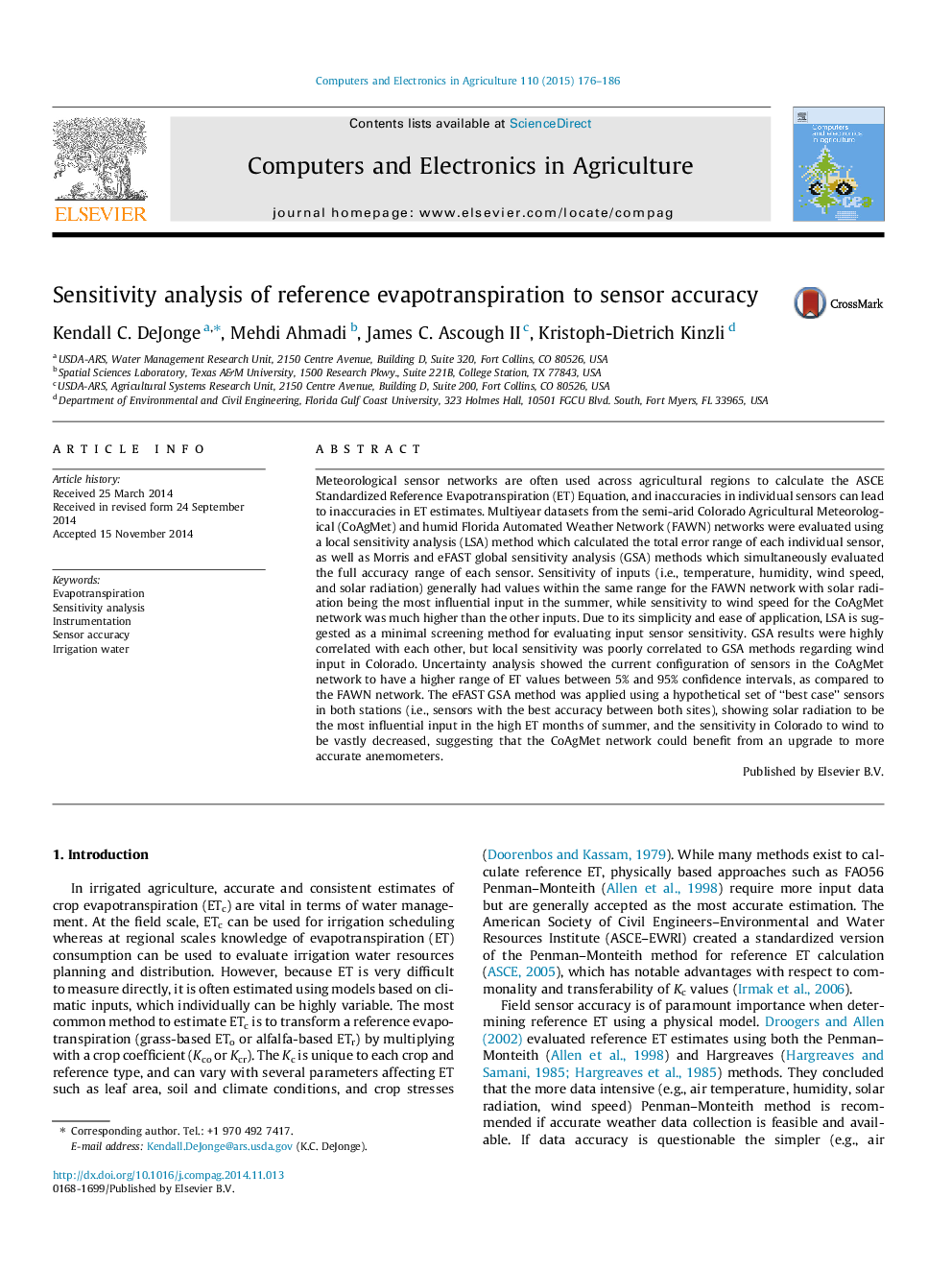| کد مقاله | کد نشریه | سال انتشار | مقاله انگلیسی | نسخه تمام متن |
|---|---|---|---|---|
| 84180 | 158868 | 2015 | 11 صفحه PDF | دانلود رایگان |
• Sensor inaccuracy can result in reference evapotranspiration inaccuracy.
• We performed local and global (Morris and eFAST) sensitivity analysis.
• Both semi-arid Colorado and humid Florida were evaluated.
• Sensitivity method results were strongly correlated with each other.
• Local sensitivity analysis is recommended to weather network managers.
Meteorological sensor networks are often used across agricultural regions to calculate the ASCE Standardized Reference Evapotranspiration (ET) Equation, and inaccuracies in individual sensors can lead to inaccuracies in ET estimates. Multiyear datasets from the semi-arid Colorado Agricultural Meteorological (CoAgMet) and humid Florida Automated Weather Network (FAWN) networks were evaluated using a local sensitivity analysis (LSA) method which calculated the total error range of each individual sensor, as well as Morris and eFAST global sensitivity analysis (GSA) methods which simultaneously evaluated the full accuracy range of each sensor. Sensitivity of inputs (i.e., temperature, humidity, wind speed, and solar radiation) generally had values within the same range for the FAWN network with solar radiation being the most influential input in the summer, while sensitivity to wind speed for the CoAgMet network was much higher than the other inputs. Due to its simplicity and ease of application, LSA is suggested as a minimal screening method for evaluating input sensor sensitivity. GSA results were highly correlated with each other, but local sensitivity was poorly correlated to GSA methods regarding wind input in Colorado. Uncertainty analysis showed the current configuration of sensors in the CoAgMet network to have a higher range of ET values between 5% and 95% confidence intervals, as compared to the FAWN network. The eFAST GSA method was applied using a hypothetical set of “best case” sensors in both stations (i.e., sensors with the best accuracy between both sites), showing solar radiation to be the most influential input in the high ET months of summer, and the sensitivity in Colorado to wind to be vastly decreased, suggesting that the CoAgMet network could benefit from an upgrade to more accurate anemometers.
Journal: Computers and Electronics in Agriculture - Volume 110, January 2015, Pages 176–186
